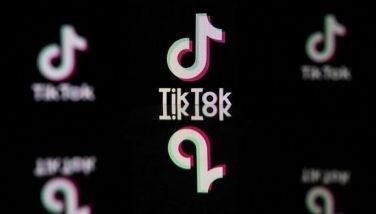Developing countries take lead
Contrary to what many think, it is the developing countries, especially those in Asia, not the developed countries, who are taking the lead in the transition from fossil fuels to renewable energy.
A recent working paper by the World Resources Insttute (WRI), an environmental think-tank, called ‘Grounding Green Power” found that developing countries are at the forefront of renewable energy policies.
Already, the majority of installed renewable electricity capacity is located in developing countries. If all of the recently announced policies are implemented by 2035, developing countries will gain more than 1476 gigawatts of renewable energy capacity; more than the projected 1,389 gigawatts of fossil fuel-based electricity or 178 gigawatts of nuclear power during the same time frame, according to projections by the International Energy Agency. This compares to just 851 gigawatts of combined additional capacity from renewable, nuclear and fossil sources developed countries are expected to build, according to Pete Maniego, chairman of the National Renewable Energy Board of the Philippines, and Lutz Weischer, research analyst at the WRI and lead author of “Grounding Green Power.”
In a paper, they noted that the global energy system is undergoing a transition from fossil fuels to renewable energy and that there are clear signs that the pace of change is accelerating.
According to data from the United Nations, 2009 was the second year in a row that more money was invested worldwide in renewable electricity generation projects than in fossil fuel-powered plants.
Developing countries, especially in Asia, are taking a lead role in this transition. The Philippines is one of the countries on track to be a leader in Asia’s shift to clean energy, if it continues to pursue ambitious goals and makes the right policy choices, the paper emphasized.
It said that in the case of the Philippines, the pursuit of renewable energy is essential for energy security. The Philippines has very little fossil fuel resources, but is blessed with abundant renewable energy sources, including solar, wind, biomass, ocean, small hydro and geothermal.
The Philippines had surpassed Japan as having the highest electricity rate in Asia, according to International Energy Consultants, an Australian consulting firm. The cost of transmitting power and transporting fuel to the more than 7,000 islands of the Philippine archipelago and to isolated missionary areas is very high. Pursuing renewable energy development is essential for the Philippines to attain energy security and economic sustainability, while helping to mitigate climate change and its devastating impacts on vulnerable places like the Philippines.
Maniego and Weischer said that the Philippines could be considered one of the world leaders in renewable energy, with more than 30 percent of its power generation coming from renewable resources. The Philippines is the world’s second largest producer of geothermal power and was the first country in Southeast Asia to deploy large-scale wind and solar technologies.
The Renewable Energy Act passed in 2008 calls for new support mechanisms, including a feed-in-tariff and a renewable portfolio standard, which are expected to be implemented in the next months. Additionally, the Philippine’s Department of Energy launched the updated National Renewable Energy Plan this month, which aims to triple renewable energy supply by 2030.
To ensure success, Philippine decision makers have invested time and energy in figuring out the best way to implement the Renewable Energy Act, including establishment of the National Renewable Energy Board. In collaboration with other agencies such as the Department of Energy and the Energy Regulatory Commission, the Board works to ensure that the National Renewable Energy Plan and the mechanisms foreseen in the Renewable Energy Act are implemented.
The Philippine example is consistent with WRI analysis, which shows that in order for countries to reach their renewable energy targets, they need to set clear and consistent policies, rather than simply pursuing a project-by-project approach. Increasingly, the challenge is not just to establish targets and policies, but to get the details right.
For example, feed-in-tariffs guarantee a fixed payment to renewable energy generators for every kilowatt hour that is fed into the grid; however, it is not easy for regulators to determine the appropriate rate at which to set the tariff. In Asia, 24 countries have feed-in-tariffs, so there is opportunity for countries to learn from each other in order to set the right policies.
The successful transition to renewable energy requires international support, including from institutions like the Asian Development Bank (ADB). In recent years, developing countries are taking a much more active role in determining the direction of their energy policies, moving toward renewable energy for their own good and defining their own strategies.
Donors, therefore, need to be responsive to a country’s demands and focus support on helping countries design and sustain the right policy environment. In the Philippines, the ADB should help by investing in energy projects that support the ambitious targets the Philippines has set for itself. This includes more investment in the replication and scale up of projects that use the wind, geothermal and biomass resources that have already been identified, instead of investing in fossil fuel and large hydropower projects, they added.
Institutions like the ADB have an important role to play in enabling data and knowledge exchange between policy makers and regulators from different countries. As a next step in the Philippines, the ADB’s support should focus on building the institutional capacity and training the engineers needed for a successful roll-out the feed-in-tariff. For instance, technical assistance for the National Renewable Energy Board would accelerate the implementation of the measures foreseen in the RE Act of 2008 and the planning of next steps, Maniego and Weischer said.
The Philippines already has ambitious renewable energy goals. With the right mix of clear policies and international support, it will achieve its targets and at even faster pace, they added.
For comments, e-mail at [email protected]
- Latest
- Trending





























